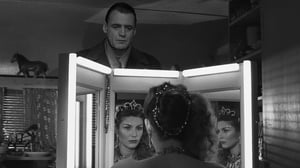Contact: info@alwanfilm.com
Video Sources 0 Views
- Watch trailer
- Wings of Desire


Synopsis
Table of Contents
ToggleReview: Wings of Desire 1987 Colorized – A Poetic Masterpiece in Vivid Color

Introduction
Wings of Desire 1987, directed by Wim Wenders, is a cinematic tour de force that transcends the boundaries of conventional storytelling. This film, originally shot in black and white, has been re-released in a colorized version, offering audiences a fresh perspective on its ethereal beauty. In this article, we will explore the impact of colorization on the viewing experience of “Wings of Desire” and discuss its importance in the context of film history.
Check The Full Colorized Movies List
Check Our Colorized Movies Trailer Channel
Understanding Wings of Desire 1987 Colorized: Director, Cast, and Genre
Wim Wenders, a visionary director known for his unique approach to filmmaking, created “Wings of Desire” as a love letter to Berlin and its inhabitants. The film stars Bruno Ganz as Damiel, an angel who yearns to experience human life, and Solveig Dommartin as Marion, a lonely trapeze artist who captures his heart. Peter Falk, playing a fictionalized version of himself, adds a touch of humor and warmth to the film. “Wings of Desire” blends elements of fantasy, romance, and drama, creating a genre-defying masterpiece that resonates with audiences on a deeply emotional level.
Exploring the World of Wings of Desire 1987 Colorized: Plot and Characters
The film follows Damiel, an angel who roams the streets of Berlin, observing the lives of its residents. Invisible to humans, he listens to their thoughts and witnesses their joys and sorrows. Despite his celestial existence, Damiel longs to experience the richness of human emotions and sensations. His desire is intensified when he encounters Marion, a trapeze artist whose melancholy and grace captivate him. As he grapples with his longing, Damiel meets Peter Falk, who reveals that he too was once an angel and chose to become human. Inspired by this revelation, Damiel decides to relinquish his immortality to be with Marion, embracing the pain and beauty of human life.
The Art of Film Colorization
Film colorization is a complex process that involves digitally adding color to black and white films. This technique has evolved significantly over the years, from the early days of hand-tinting frames to the sophisticated digital methods used today. By meticulously selecting colors that complement the original film’s aesthetic, colorization artists aim to enhance the visual experience while preserving the director’s vision.
Early Colored Films: A Brief History
The history of colored films dates back to the early 20th century, with pioneers like Georges Méliès experimenting with hand-painted frames. The introduction of Technicolor in the 1920s revolutionized the industry, allowing filmmakers to create vibrant, multi-colored films. Over the decades, advancements in technology have made colorization more accessible and refined, leading to the re-release of classic black and white films in color.
Wings of Desire 1987 and Its Early Colored Version
The decision to release “Wings of Desire” in a colorized format was met with mixed reactions. Some purists argued that the black and white cinematography was integral to the film’s poetic and dreamlike quality. However, the colorized version offers a new dimension to the film, allowing viewers to appreciate the vibrant world that Damiel yearns to experience. The colorization process has been carefully executed to respect Wenders’ original vision, enhancing the film’s ethereal beauty without compromising its artistic integrity.
The Debate Over Film Colorization
The debate over film colorization is ongoing, with proponents arguing that it breathes new life into classic films and introduces them to younger audiences. Critics, however, contend that colorization can alter the original aesthetic and diminish the historical significance of black and white films. In the case of “Wings of Desire,” the colorized version serves as an alternative viewing experience, offering a fresh perspective on Wenders’ masterpiece while preserving the option to view the original black and white version.
Examining Wings of Desire as an Early Colored Film
As an early colored film, Wings of Desire 1987 provides a fascinating case study in the impact of colorization on cinematic storytelling. The added color enhances the film’s visual appeal, highlighting the contrast between the angelic realm and the vibrant human world. The colorized version accentuates the emotional depth of the characters and the beauty of Berlin, enriching the viewing experience for both new and longtime fans of the film.
Influence and Legacy: Wings of Desire 1987 Colorized’s Impact on Cinema
“Wings of Desire” has left an indelible mark on the world of cinema, inspiring filmmakers and captivating audiences with its lyrical storytelling and innovative cinematography. The film’s exploration of existential themes and its unique visual style have influenced a generation of directors, including Tom Tykwer and Guillermo del Toro. Its impact extends beyond the realm of fantasy and romance, resonating with viewers who appreciate its profound meditation on the human condition.
Director’s Cinematic Legacy: Beyond Wings of Desire 1987 Colorized
Wim Wenders’ influence on cinema extends far beyond “Wings of Desire.” His diverse body of work, including “Paris, Texas” and “Buena Vista Social Club,” showcases his talent for capturing the essence of place and character. Wenders’ films are celebrated for their contemplative pacing, evocative imagery, and emotional depth, solidifying his legacy as a master filmmaker whose work transcends genre boundaries and continues to inspire audiences worldwide.
Themes Explored in Wings of Desire 1987 Colorized
“Wings of Desire” delves into a range of themes, from the yearning for human connection to the search for meaning in a transient world. The film’s exploration of love, loneliness, and the human experience is rendered with poetic sensitivity, inviting viewers to reflect on their own lives and relationships. The juxtaposition of the angelic and human realms underscores the beauty and fragility of existence, offering a poignant reminder of the preciousness of every moment.
Reception and Controversy Surrounding Wings of Desire 1987 Colorized
Upon its release, Wings of Desire 1987 received critical acclaim for its innovative storytelling and visual artistry. The film’s black and white cinematography was particularly praised for its ability to convey the ethereal nature of the angels’ perspective. The release of the colorized version, however, sparked controversy among film purists who argued that it compromised the original aesthetic. Despite the debate, the colorized version has found an appreciative audience, demonstrating the timeless appeal of Wenders’ masterpiece.
Where to Watch Wings of Desire 1987 Colorized Online
For those eager to experience the magic of “Wings of Desire,” the film is available on popular streaming platforms such as Netflix, Amazon Prime, and Hulu. Whether you choose to watch the original black and white version or the newly colorized edition, “Wings of Desire” promises to transport you to a world of poetic beauty and existential wonder.
FAQs About Wings of Desire 1987 Colorized
Q: Is Wings of Desire 1987 based on a true story? A: No, Wings of Desire 1987 is a work of fiction, inspired by director Wim Wenders’ vision and co-written with Peter Handke. The film’s poetic narrative and fantastical elements are products of creative imagination rather than historical events.
Q: Who are the main actors in Wings of Desire 1987? A: The film stars Bruno Ganz as the angel Damiel, Solveig Dommartin as the trapeze artist Marion, and Peter Falk as a fictionalized version of himself. The cast also includes Otto Sander as Cassiel, another angel who observes human life with Damiel.
Q: What awards did Wings of Desire 1987 win? A: “Wings of Desire” received numerous accolades, including the Best Director award for Wim Wenders at the Cannes Film Festival in 1987. The film was also honored with the European Film Award for Best Film and has been celebrated for its innovative storytelling and visual artistry.
Q: Why was Wings of Desire 1987 released in a colorized format? A: The colorized version of “Wings of Desire” was created to offer a new perspective on the film and to appeal to modern audiences. While the original black and white cinematography is revered for its poetic quality, the colorized edition allows viewers to experience the vibrant world that Damiel longs to join.
Q: What is the significance of the black and white versus color in Wings of Desire 1987? A: In the original film, the black and white sequences represent the perspective of the angels, highlighting their detachment from human experience. The color sequences, introduced later in the film, signify Damiel’s transition to human life, emphasizing the richness and vibrancy of mortal existence. The colorized version reimagines these contrasts, offering a continuous visual experience while maintaining the thematic depth.
Q: Where was Wings of Desire 1987 filmed? A: “Wings of Desire” was filmed on location in Berlin, capturing the city’s unique atmosphere and historical landmarks. The film’s cinematography beautifully showcases Berlin’s architectural and cultural landscape, adding depth and authenticity to the narrative.
Q: Is there a sequel to Wings of Desire 1987? A: Yes, Wim Wenders directed a sequel titled “Faraway, So Close!” released in 1993. The sequel continues the story of the angels and their interactions with the human world, exploring new themes and characters while maintaining the poetic style of the original film.
Q: What inspired Wim Wenders to create Wings of Desire 1987? A: Wim Wenders was inspired by the idea of angels observing human life and the philosophical questions surrounding existence, love, and mortality. Collaborating with writer Peter Handke, Wenders crafted a narrative that blends fantasy and reality, creating a film that is both visually stunning and emotionally profound.
Conclusion
Wings of Desire 1987 stands as a timeless cinematic masterpiece that transcends the boundaries of conventional storytelling. Wim Wenders’ visionary direction, combined with the unforgettable performances of Bruno Ganz, Solveig Dommartin, and Peter Falk, creates a film that resonates deeply with audiences. The release of the colorized version offers a fresh perspective on the film’s ethereal beauty, allowing viewers to experience the vibrant world that Damiel longs to join.
As we reflect on the enduring legacy of “Wings of Desire,” let us celebrate its status as a poetic and philosophical exploration of the human condition. The film’s themes of love, longing, and the search for meaning are as relevant today as they were in 1987, reminding us of the timeless power of cinema to inspire and provoke thought.
Whether you choose to watch the original black and white version or the colorized edition, Wings of Desire 1987 promises to transport you to a world of beauty and wonder, where the boundaries between the celestial and the mortal blur, and the profound truths of existence are revealed.


















